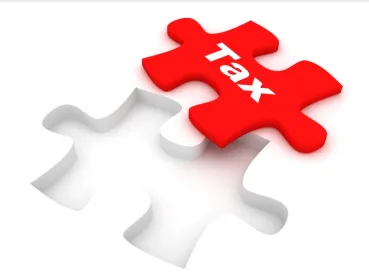On January 1, 2018, modifications to the rollover distribution rules for certain retirement plan participants with defaulted plan loans went into effect. As a result of a provision in the Tax Cuts and Jobs Act, the rollover distribution rules are now more relaxed for rollovers of defaulted loans resulting from plan terminations or a participant’s failure to repay a loan upon severance from employment. These changes impact several provisions in the “safe harbor” model tax notices for eligible rollover distributions that were published by the Internal Revenue Service (IRS) in 2009 and updated in 2014.
When the IRS published the 2014 updated tax notices (one notice applies to payments from a designated Roth account and the other applies to payments that are not from a designated Roth account), the IRS specified that the “safe harbor” notices would no longer satisfy the legal notice requirements “to the extent the explanations are no longer accurate because of a change in the relevant law occurring after December 8, 2014.” The IRS has not yet updated the model tax notices to reflect the 2018 changes in the law, and due to IRS staffing shortages, we do not expect updated notices to be published in the near future. Thus, employers may want to confirm with their plan administrators that the required tax notices are updated for use in 2018.
Changes to the Rollover Rules
Prior to 2018, a retirement plan participant with a defaulted plan loan following the participant’s severance from employment or the termination of the plan was subject to an offset against his or her account balance. The participant had 60 days to avoid paying taxes and penalties on the deemed distribution of the defaulted loan balance. To do so, the participant had to come up with funds equal to the defaulted loan balance, plus any tax withholding, and roll over those funds to an individual retirement account (IRA) or other qualified plan.
Beginning January 1, 2018, a participant has a considerably longer period of time to complete the rollover and avoid paying taxes and penalties on the defaulted loan. Participants now must complete the rollover by their tax return due date on the year following the year of the plan loan offset. That means the participant must complete the rollover by April 15 (or if he or she filed an extension, October 15) of the year after the year the defaulted loan was offset against the participant’s plan account.
Note that this relief may not be available in some cases where the loan was deemed distributed and reported as taxable income in a prior year but was not offset at that time.
Duty to Update
Plan fiduciaries have a duty under the Employee Retirement Income Security Act of 1974 (ERISA) to act solely in the interests of plan participants to protect their retirement benefits. As a result, it is the plan fiduciary’s duty to make clear, accurate, and timely communications regarding the steps participants can take to avoid a loan offset and taxation.
Due to the extension of the period for rolling over plan loan offsets, several references in the special tax notices to a 60-day rollover period are no longer accurate with respect to rollovers of plan loan offsets. If a plan administrator distributes the 2014 notice, a participant would likely not be aware that he or she has several months to repay the loan and complete the rollover to avoid taxation on the defaulted loan. As timely issuance of required plan notices is a fiduciary function, the plan administrator may have fiduciary liability under ERISA for failure to issue an accurate tax notice to affected participants. For example, a participant who terminates her employment in October of 2018 with an outstanding loan may not realize that she has until October 15, 2019 (if she extended her individual income tax return due date) to save enough money to equal the loan offset plus the 20 percent tax withholding and complete the rollover of her account, thus avoiding the income tax and a potential 10 percent early distribution penalty tax on the loan offset amount.
Simple but important updates to the notices may be needed to avoid potential liability caused by a participant’s reliance on inaccurate statements in the 2014 notices.
Action Steps
It is common for a third party service provider administering a plan to provide the special tax notices to participants who receive a distribution from the plan. The plan sponsor may rarely see the tax notice if the distribution package is sent directly from the service provider to the participant who will be receiving the distribution.
Accurate communication and administration is a fiduciary function of the plan administrator. In many plans, the employer is the plan administrator and the fiduciary responsible for providing accurate plan disclosures. In other companies, individual officers or an established committee serves the plan administrator role and bears this responsibility. The plan sponsor may want to confirm who is serving as the plan administrator and make sure the fiduciary contacts the plan service providers to update their loan program and the special tax notices for eligible rollover distributions to reflect the 2018 tax law changes.




 />i
/>i
